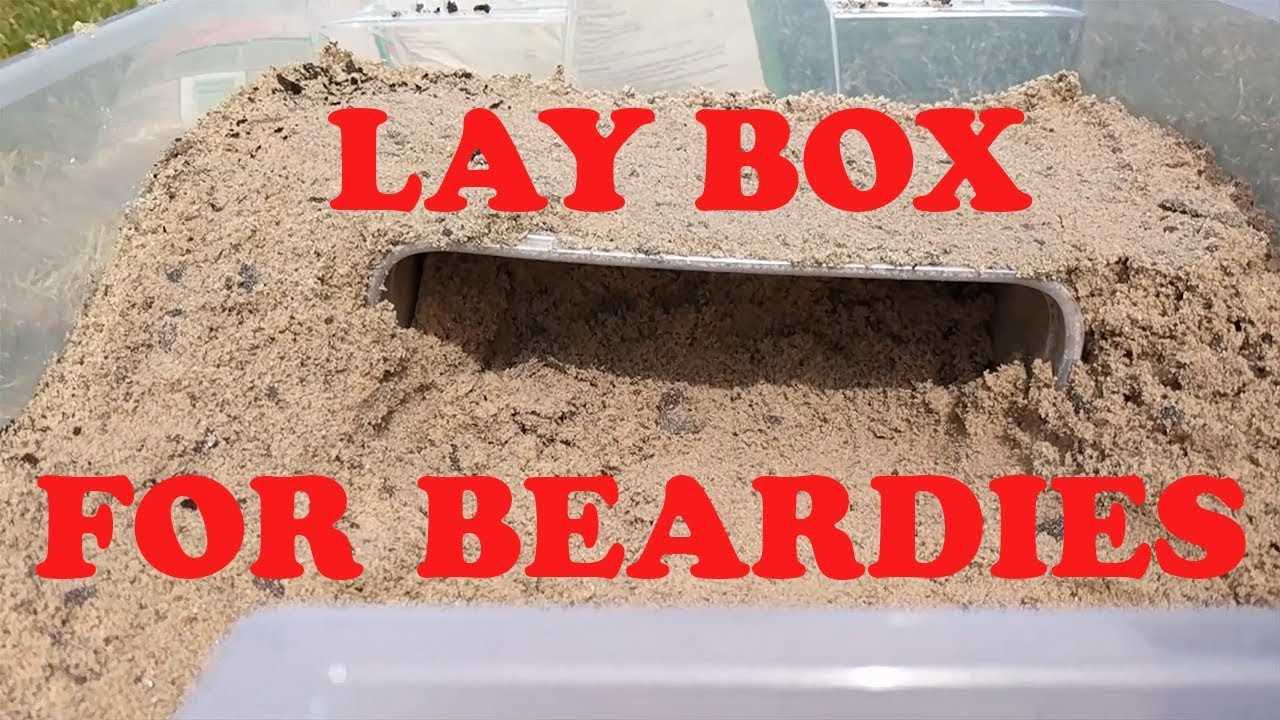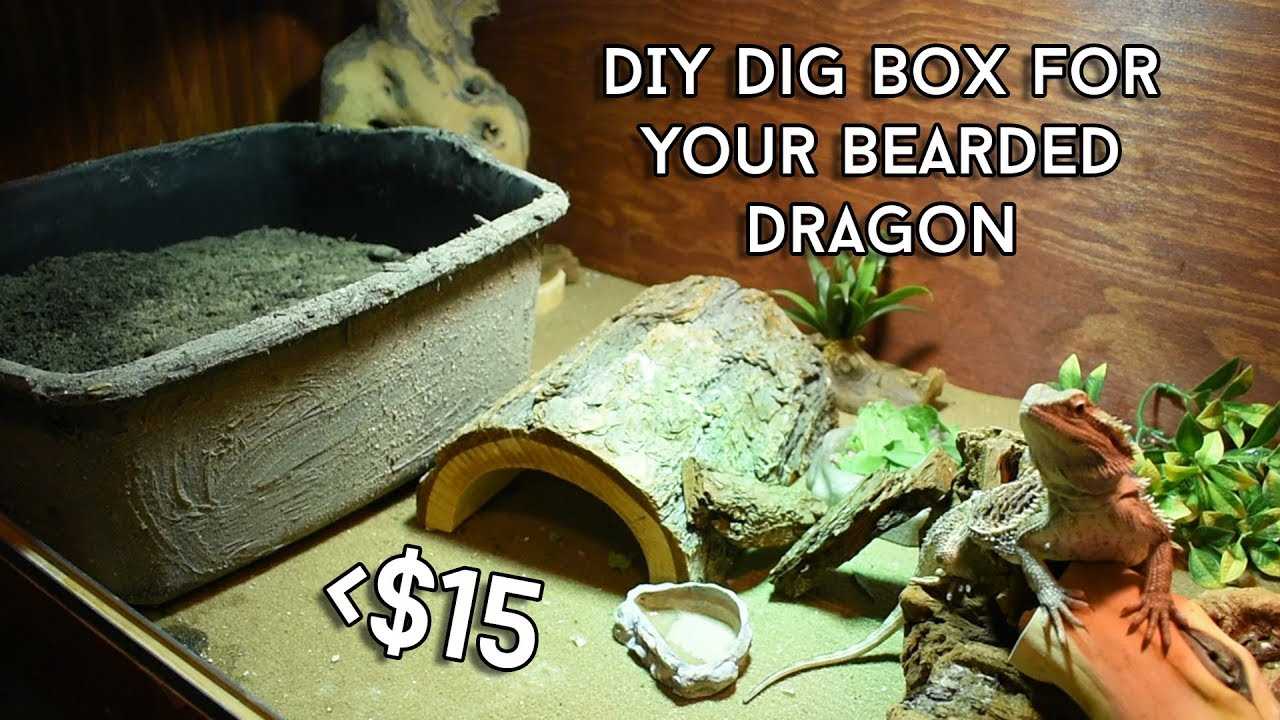A lay box is a designated area within the bearded dragon’s terrarium where the female can dig a burrow and lay her eggs. This box simulates the natural nesting conditions found in the wild and provides a safe and secure environment for the eggs to develop. Creating a perfect lay box involves a few key considerations.
Firstly, the size of the lay box should be appropriate for your bearded dragon. It should be spacious enough for the female to comfortably dig a burrow and lay her eggs but not too large that it becomes difficult to maintain the temperature and humidity levels. A general guideline is to use a lay box that is around 12-18 inches in length and width, and at least 6 inches deep.
Secondly, the substrate used in the lay box should be suitable for egg incubation. A mixture of vermiculite and sand is often recommended as it provides good moisture retention and allows for easy digging. This substrate should be moistened to a consistency similar to damp beach sand, ensuring that it is neither too wet nor too dry. This is crucial for the proper development of the eggs.
Benefits of a Bearded Dragon Lay Box

A lay box is an essential component in providing a natural habitat for a bearded dragon. This reptile species is known for its habit of laying eggs, and a lay box is designed to mimic the conditions necessary for a successful egg-laying process.
Creating a Suitable Environment
The lay box should be filled with a suitable substrate that replicates the natural environment. A mix of sand and soil works well, as it allows for easy digging and burrowing. This gives the female dragon the opportunity to create a secure and cozy nest for her eggs.
Encouraging Natural Behaviors
Having a lay box in the enclosure encourages bearded dragons to exhibit their natural behaviors. Female dragons have an instinctual urge to burrow and lay their eggs, and providing them with a suitable lay box allows them to fulfill this instinct.
By providing a lay box, you are promoting the natural behaviors of your dragon and ensuring their overall well-being. This can help reduce stress and increase their overall satisfaction in their captive environment.
Improved Breeding Success
A well-designed lay box plays a crucial role in promoting successful breeding in bearded dragons. By creating an environment that closely mimics their natural habitat, you increase the chances of a successful breeding process.
The female dragon will feel comfortable and secure in the lay box, which allows her to lay her eggs properly. This reduces the risk of complications during the egg-laying process and increases the chances of successfully hatching healthy hatchlings.
Some reptile enthusiasts also use a lay box as an incubator for the eggs. By providing the right temperature and humidity levels, you can create an ideal incubation environment, resulting in higher hatch rates.
Creating a Natural Habitat for Your Bearded Dragon
In the wild, bearded dragons typically dig burrows to lay their eggs. This behavior is essential for their reproductive process and should be replicated in captivity. By providing a lay box in your bearded dragon’s terrarium, you can encourage this natural behavior and create a suitable environment for them to lay their eggs.
Placing the lay box in a quiet and secluded area of the terrarium is also important. This will help your bearded dragon feel secure and reduce any disturbance during the egg-laying process.
Creating a natural habitat for your bearded dragon is not only important for their overall well-being but also for their reproductive health. By providing a lay box, you are giving your female bearded dragon the opportunity to exhibit natural behaviors and create a suitable environment for her eggs to develop.
Remember, creating a natural environment for your bearded dragon is crucial for their overall health and well-being. Providing a lay box is just one way to ensure they have the best possible living conditions and thrive as a reptile species.
Encouraging Breeding Behavior in Bearded Dragons
Creating a suitable environment for breeding is crucial if you want to promote breeding behavior in bearded dragons. One important aspect of this is providing a lay box in the terrarium.
A lay box is a dedicated area within the reptile’s enclosure where female bearded dragons can dig and lay their eggs. It mimics the natural burrows they would use in the wild. By providing a lay box, you are giving your dragon a safe and comfortable place to lay her eggs.
Fill the lay box with a suitable substrate that mimics the natural environment of the bearded dragon. A mix of sand and soil works well, providing the right balance of moisture retention and drainage. You can also add some leaf litter or moss to create a more natural feel.
By providing a lay box, you are encouraging your bearded dragons to exhibit natural breeding behaviors. The female will be more likely to mate and lay her eggs in the designated area. This increases the chances of successful egg fertilization and hatching.
Once the eggs are laid, you can carefully remove them from the lay box and place them in a separate incubator. This will provide the optimal conditions for development and hatching of the hatchlings.
Promoting Egg Laying Success
Creating a suitable lay box is essential for the successful reproduction of bearded dragons in captivity. Bearded dragons, like other reptiles, require a specific environment to lay their eggs and ensure the incubation process is successful.
Importance of a Lay Box

A lay box is a designated area within the bearded dragon’s terrarium where they can dig and bury their eggs. Creating a proper lay box is crucial because it mimics the natural habitat of the bearded dragon in the wild.
The lay box should be spacious enough to accommodate the bearded dragon comfortably and allow them to create a deep burrow. Providing a suitable lay box encourages the bearded dragon to exhibit natural breeding behaviors, such as digging and burrowing, which are essential for successful egg deposition.
Creating an Ideal Lay Box
To promote egg-laying success, the lay box should have appropriate dimensions and substrate. A good rule of thumb is to use a container that is at least 12 inches deep and wide enough for the bearded dragon to turn around comfortably.
The substrate should consist of a mixture of sand and soil to create a soft and easily burrowable environment. This substrate mimics the natural environment of the bearded dragon and allows them to dig deep burrows to deposit their eggs.
It is crucial to maintain proper humidity levels within the lay box. The substrate should be slightly moist, but not overly wet. This ensures that the eggs remain hydrated during the incubation period.
Monitoring and Incubating the Eggs
Once the bearded dragon has laid its eggs in the lay box, it is vital to carefully monitor the conditions within the box. The temperature and humidity levels should be maintained to ensure the viability of the eggs.
Some reptile enthusiasts prefer to remove the eggs from the lay box and place them in a separate incubator. This allows for better control over the incubation environment, such as temperature and humidity. However, if the conditions within the lay box are suitable, the eggs can be left to incubate naturally.
During the incubation period, it is crucial to avoid disturbing the eggs to prevent injury or damage. The eggs should be left untouched until they hatch, which typically takes around 60-80 days.
Once the hatchlings emerge from the eggs, they should be carefully removed from the lay box and placed in a separate enclosure to ensure their safety and proper care.

I’m Lena Adams—a product of an unconventional upbringing in the African wilderness. My father, a daring explorer of African wildlife, sparked my fascination with reptiles, a passion that intertwined with the tragic loss of my mother during an expedition, leaving an indelible mark on my life. Driven to understand the creatures that captivated my parents, I embarked on my journey, sharing insights about reptiles, frogs, and lizards on my website. Through my explorations and conservation efforts, I honour my family’s legacy while seeking connections—to the creatures, nature, and the mother whose presence I yearn to understand.
